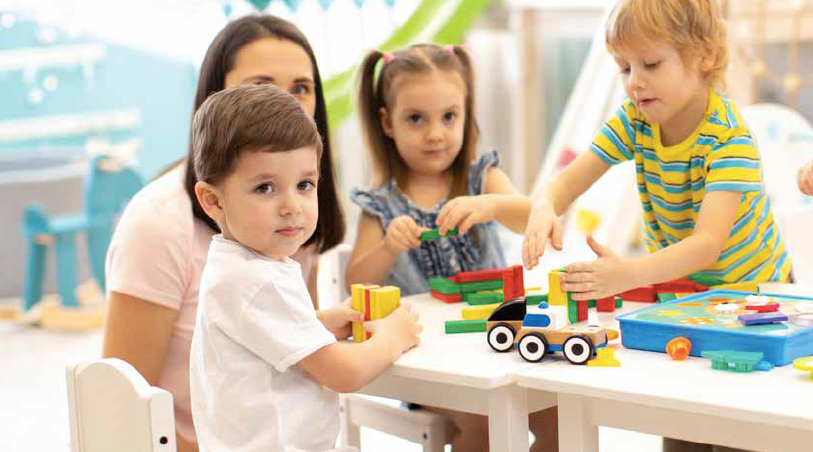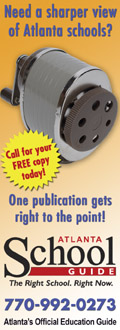The Learning Curve
Strategies to Help Your Child Study Better

By Michelle Bourg
You check in on your kids, and it’s a typical scene: Your oldest is
buried in a book and oblivious to “Sesame Street” blasting from the TV as your middle child recites along. Meanwhile, your youngest has taken the game controller apart. All children have their own ways of processing information, or what educational theorists commonly call learning styles. By getting a sense of how your child learns best — their learning style — you can help them study and learn more effectively and achieve and build on success at school.Over the past 30 years, extensive research has been conducted on learning styles. These systems typically recognize as few as three and as many as eight different styles, but usually center on three core modalities: visual (associating images with information), auditory (listening to and repeating information) and kinesthetic (typically processing information through touch and manipulation, but also using gestures or movement while learning). Many systems, such as the VARK model (Visual, Auditory, Reading/Writing and By Michelle Bourg Kinesthetic), include reading and writing as a separate style. Some also distinguish between solitary and group learners.
You can likely determine much about your child’s style through observation and from asking a teacher for his or hers; this can be particularly helpful in getting an idea how your child learns in a group setting. Several of the leading learning-style systems have online questionnaires, or you can ask a teacher or guidance counselor about more involved testing.
Once you have a good idea how your child learns best, you can incorporate some simple study strategies that will complement their preferences.
Visual Learners
Visual learners are observant, detail-oriented and often gifted mimics. They easily absorb information from diagrams, charts and pictures and enjoy puzzles, flash cards and workbooks. They tend to struggle with scholastic activities like creative writing and figurative thinking.
With your visual learner, incorporate educational videos, draw pictures together or use objects to illustrate concepts like addition and subtraction. Encourage writing down the steps in a math problem to see the processes. Help them develop visual memorization cues, like the old “knuckle trick” for the days in the months of the year. Help them practice converting these images to words quickly by making it a game with a timer.
Auditory Learners
Auditory learners are the ones who “talk your ear off.” They like to “talk problems out” and frequently sound words out when reading. As a result, they’re often phonetic spellers. Writing is a struggle for them at times, and they need practice sorting visual material for better performance on tests.
Encourage your auditory child to read aloud. Review material by playing “question and answer,” and encourage him to explain or restate what he’s learned after a study session. Books on tape or other audio or video recordings are also useful. Auditory learners often learn well in groups and enjoy having a study partner or homework coach readily available.
Kinesthetic Learners
These are the kids who are always being told, “don’t touch that.” They’re often physically active and need practice sitting still and listening.
For this type of learner, stock up on supplies, like clay, blocks, models and globes. Break study sessions into shorter time frames, and let your child move around as he studies. Since this type of learner’s need for movement can be distracting to others, help them develop ways to “fidget quietly”—doodling in the margins of his notebook, squeezing a rubber ball or rolling a marble in their pocket.
Kinesthetic learners often become discouraged because traditional classrooms aren’t usually set up for their benefit. Sitting still and doing the work is often difficult for them, so be sure to give them lots of encouragement and speak with the teacher about your child’s unique needs.
Reading And Writing (Verbal) Learners
These are the most “typical” learners: the ones with the class notes everyone wants to borrow. They quite often prefer learning alone and at their own pace.
Encourage a verbal learner to write out notes, paraphrasing concepts into his or her own words and using bullet points. Even writing out the steps in a math problem can help cement the concepts mentally. When working with charts or graphs, have him or her write down the ideas the data is conveying.
Closely related to the idea of learning styles is the concept of metacognition, or thinking about one’s own thought process. Studies have shown that having students think about and discuss their study strategies improves their study on future exams while also developing critical self-awareness skills that will benefit them as they grow up. After an exam or project, talk with your child about what study methods helped and which didn’t, and build future study sessions on the successful methods.
It’s important to remember that a preferred mode of learning may change over time, and doesn’t determine ability in a given subject: a reading and writing learner may in fact be more adept at math and science than creative writing. Also, an individual child will likely exhibit a mix of styles and benefit from adopting a variety of study techniques, depending on the subject and how they feel at the time. However, understanding your child’s learning style can be a useful tool in helping them achieve academic success.
For more information on learning styles, tests and questionnaires to help determine your child’s style, visit:
vark-learn.com
learning-styles-online.com
learningstyles.org








